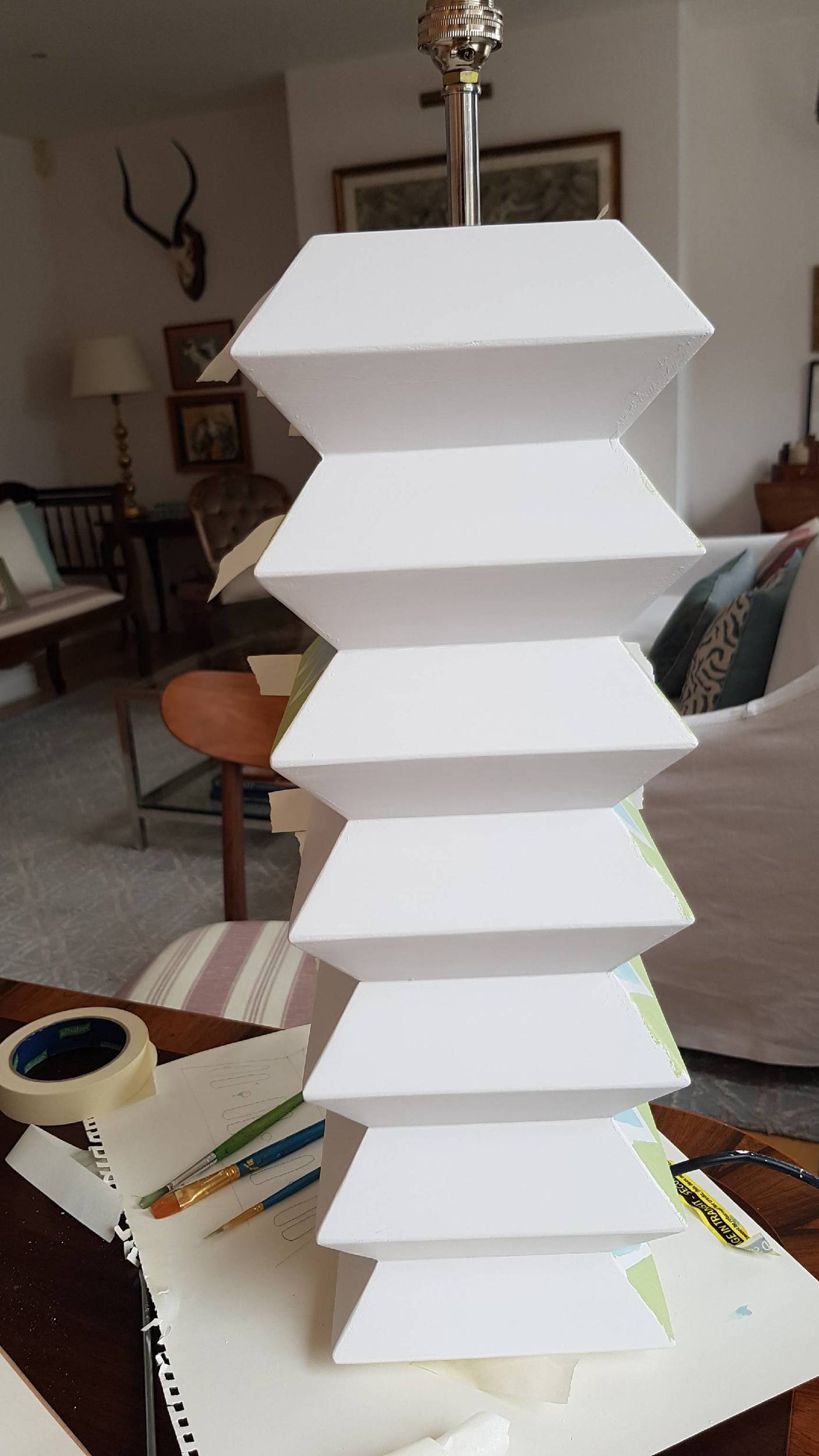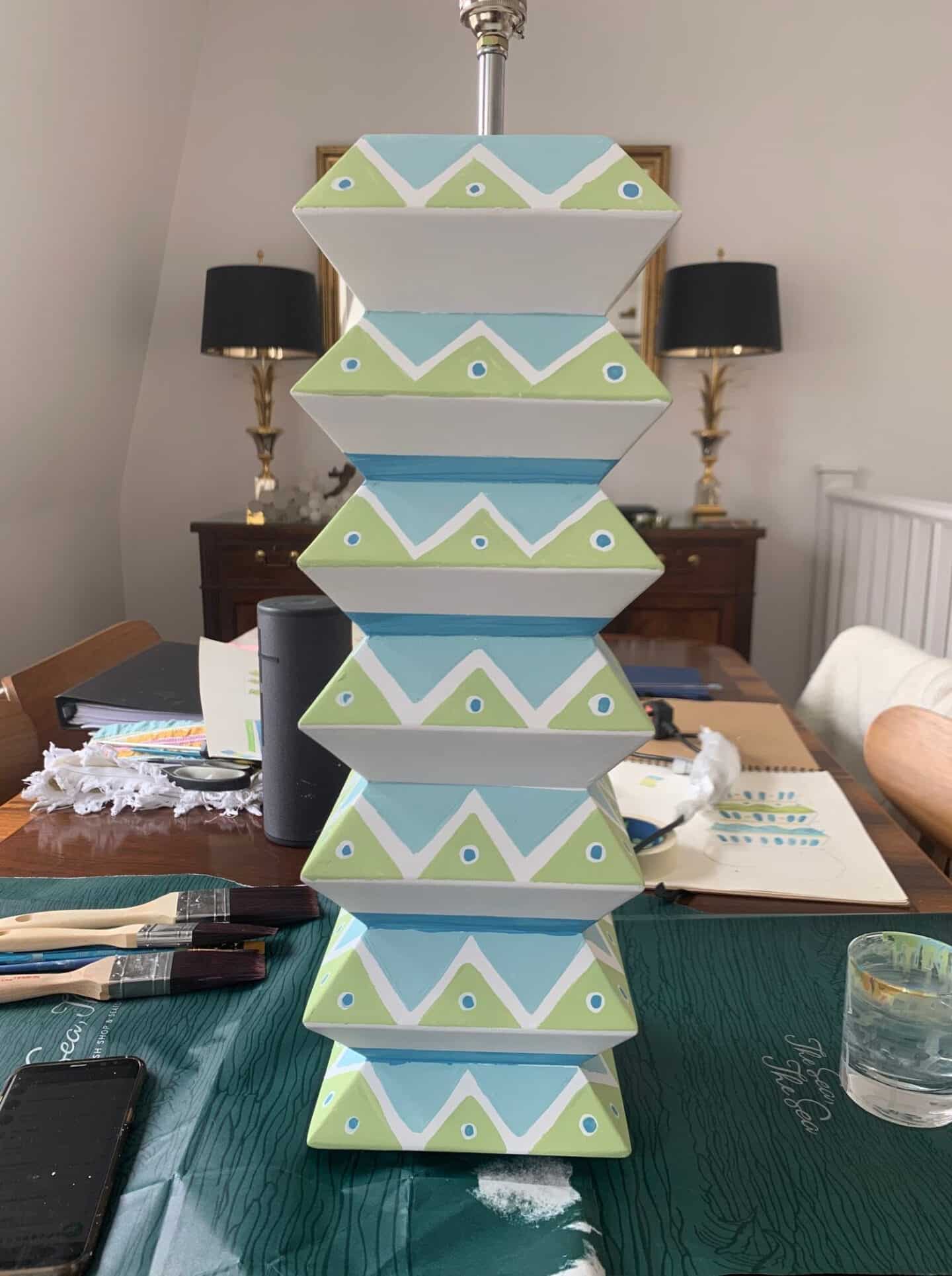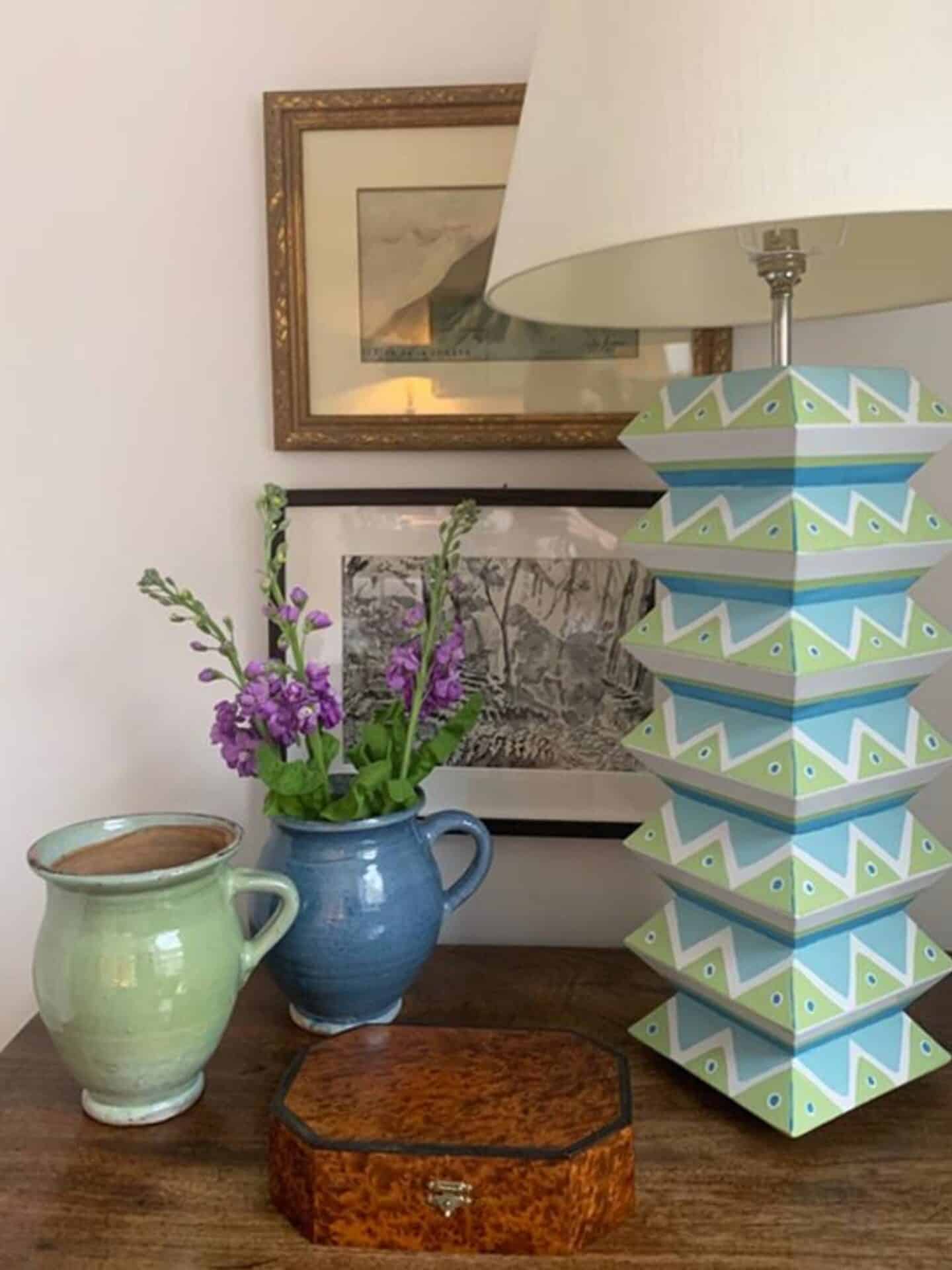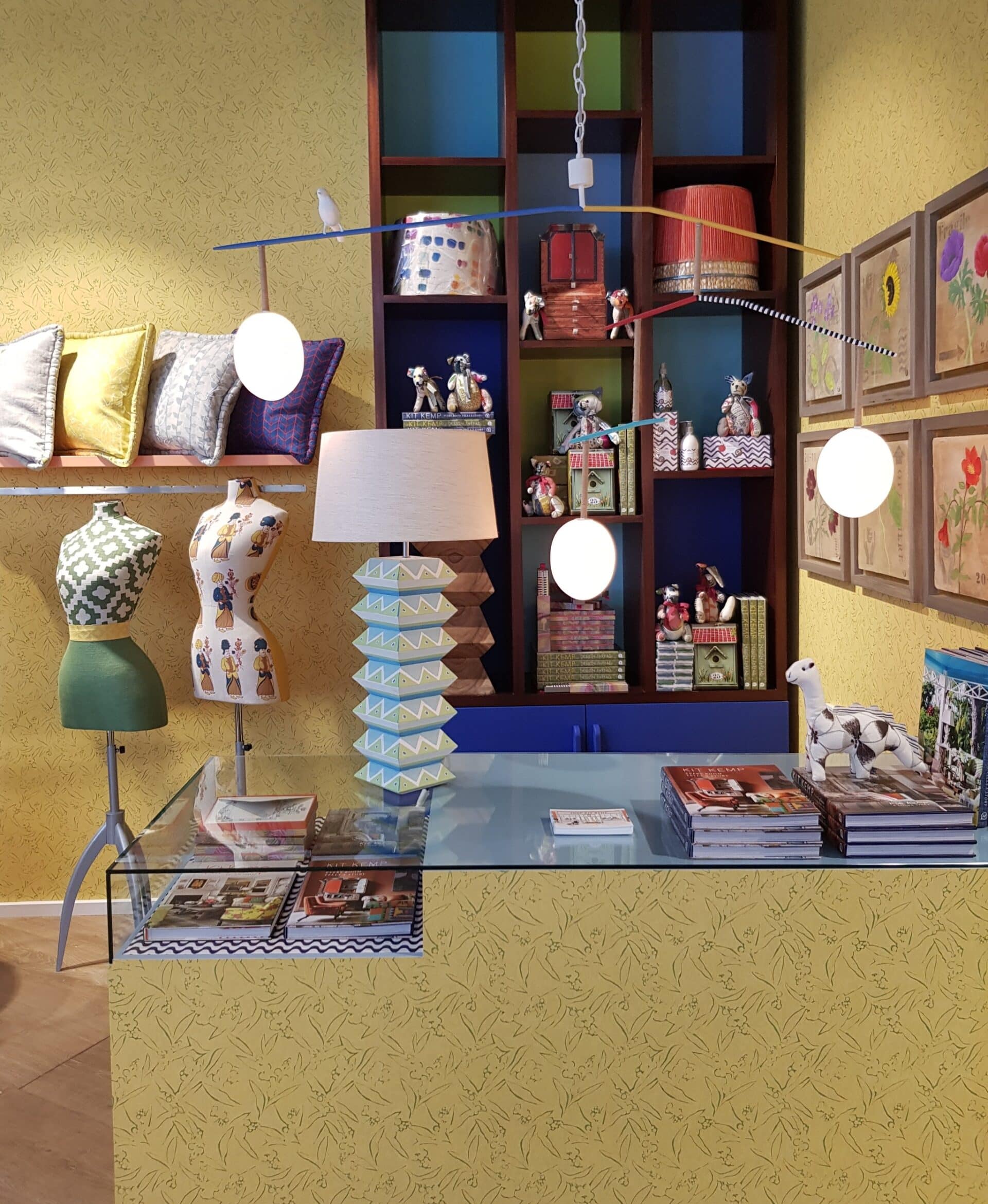Here at the Kit Kemp Design Studio, we have a weakness for hand-painted furniture.
Its charm and elegance has risen in popularity over recent years and we have had the pleasure of working with some wonderfully talented artists to give some of our pieces a unique finish.
We have previously worked with decorative painter Amy Balfour to create a Bloomsbury-inspired hand-painted mirror, and in our recent Meet The Maker we spoke with Tess Newall who is the first artist to give a splash of colour to our new geometric stack lamp.
Even brands such as Soane Britain have launched a collection of beautiful hand-painted lamps, and we couldn’t be happier.
A hand-painted piece of furniture has a bespoke artisanal finish and will give a unique feel to any space.
Following the success of Tess’s beautiful stack lamp designs, we decided to craft a number of pieces ourselves here at the design studio.
We began by painting our very own stack lamp and thought we would share how we went about it…
1. Before diving in with our paints, we made some sketches with several different designs to assess how it might look on the lamp. We also chose the colours in advance.
3. Then we started painting! We used tape to get straight lines, and we applied the colours in layers so the final effect was built up gradually. In doing this, it gives you more control over the specific colour and creates additional detail. For example, for this design we felt we needed a slightly stronger darker blue to achieve a more striking result. We wanted the lamp to be fresh but not too pastel.
2. As the lamp has been finished in plaster, we applied two very thin layers of white matt paint. We used a matt emulsion, although eggshell is normally more suitable to paint furniture. For a matt finish, chalk paint is also very nice and easy to use. These first coats will give you an even background to work with and makes the surface less absorbent, which means you will use less paint on subsequent layers.
4. Once we were happy with the result, we applied a Polyvine decorator’s varnish. Don’t be scared by the bluish colour of the varnish. Just make sure you apply the layers thinly and you spread the product well. It’s better to apply several thin layers than fewer thick ones. Wait until a layer is dry before applying the next.
Each of us is going to paint one, so we’ll keep you posted on how we get on.
This procedure can be used on timber tables, timber lamps, boxes and much more… the world is your oyster! Tag us on Instagram with @kitkempdeesignthread and #DesignThreads to share pictures of your painted furniture.
We would love to see your projects!









